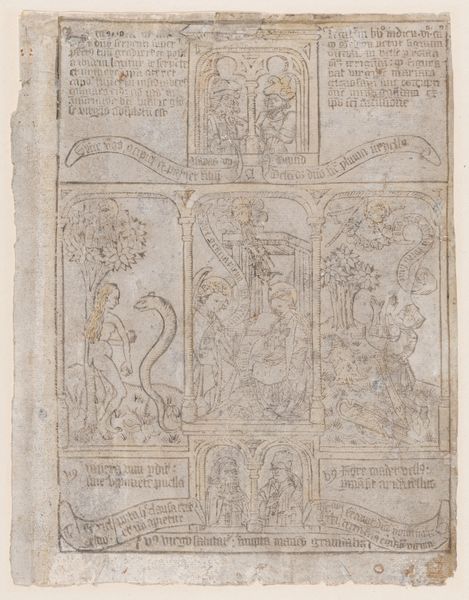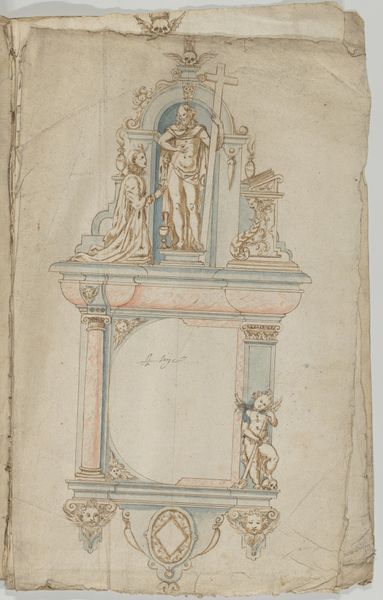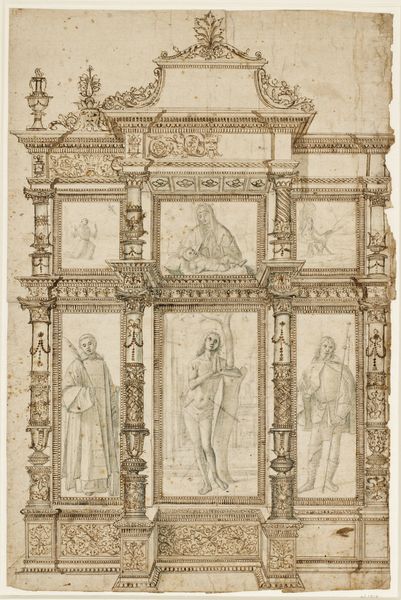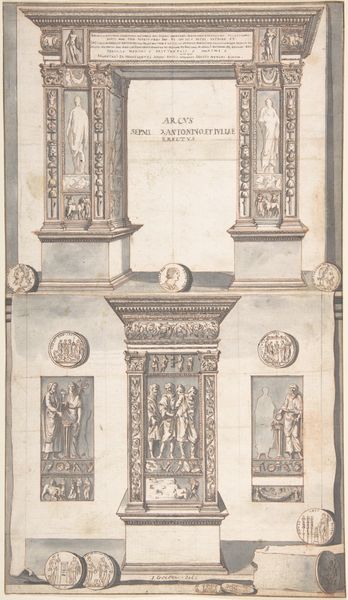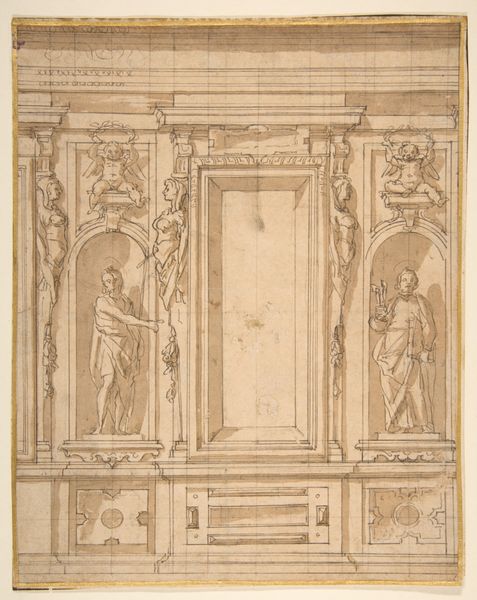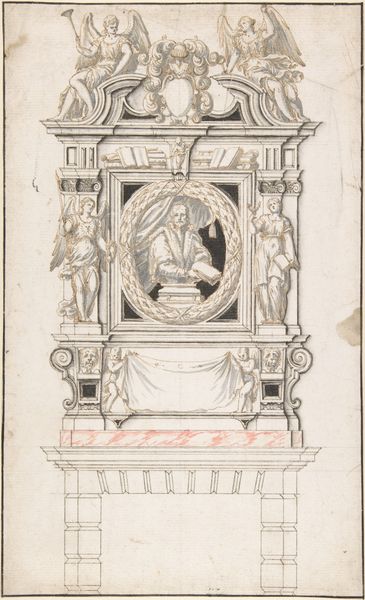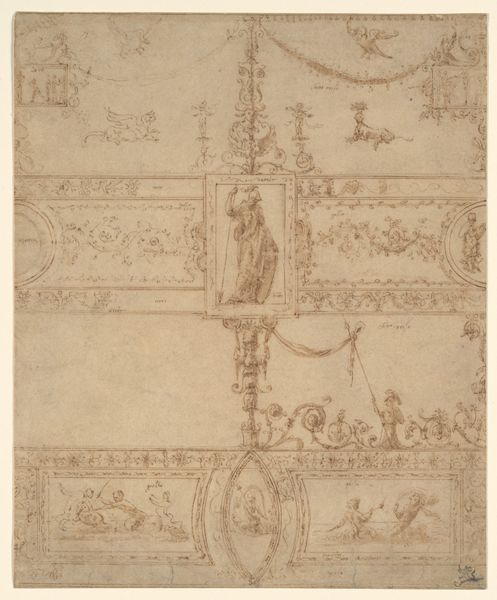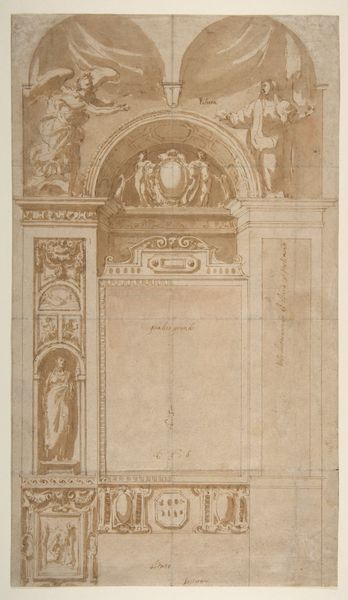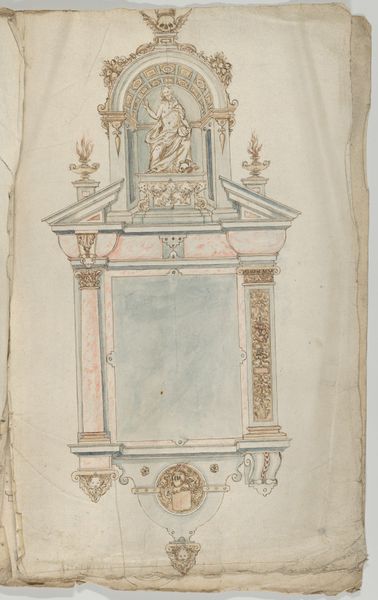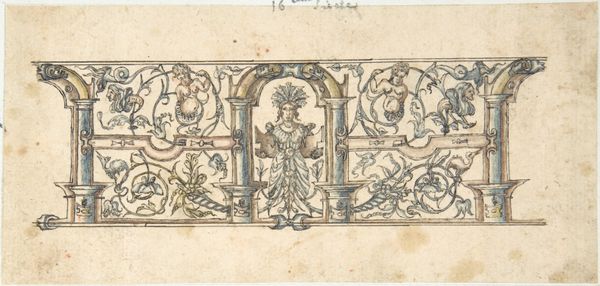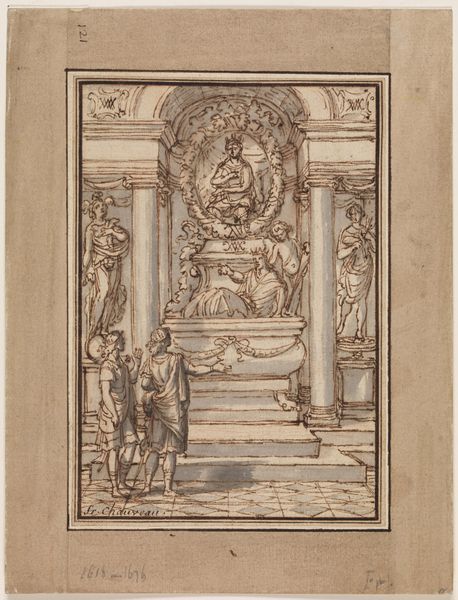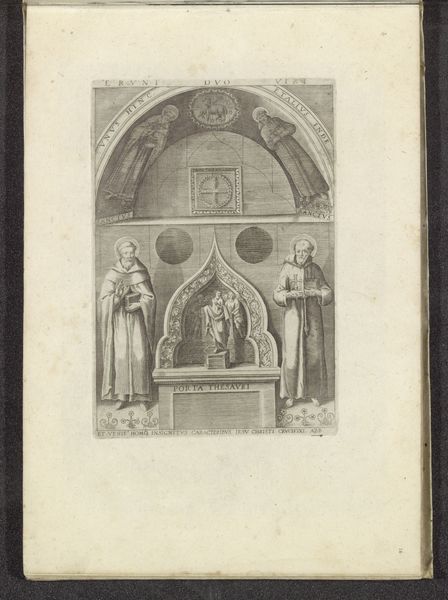
drawing, paper, ink
#
drawing
#
figuration
#
paper
#
11_renaissance
#
ink
#
history-painting
#
italian-renaissance
Dimensions: height 333 mm, width 225 mm
Copyright: Rijks Museum: Open Domain
Curator: So, what's grabbing you first about this intriguing piece? It's entitled "Ontwerp voor een altaarstuk met vijf compartimenten," or, "Design for a Five-Compartment Altarpiece," and it was created sometime between 1490 and 1556 by Girolamo da Santacroce. It’s an ink drawing on paper. Editor: Honestly? It feels like a whisper from the past. All soft lines and gentle shading; I get a devotional and ethereal feeling, like I'm peering into someone's most heartfelt prayer. I really am loving the architecture too. Curator: Absolutely. Contextually, altar pieces in the Renaissance were powerful didactic tools. They were tools that spoke volumes about religious and social order. The design here emphasizes hierarchy—notice how the central figure is elevated above the others? It speaks to systems of power that permeate societal structures. Editor: And you feel the almost ghostly quality really underscores the weight of tradition, the passing down of those structures, doesn't it? And while the piece is understated there's definitely beauty to the precision, with these small architectural details hinting at future artistic innovations, especially within the sacred art form. Curator: I couldn’t agree more. Consider that religious artwork wasn’t solely about faith; it mirrored gender dynamics, often representing women in very particular ways, think passive or allegorical figures versus empowered leadership roles, for instance. The artist here adheres to many such established tropes and representational constraints. Editor: Mmh, interesting. It is hard to tell the identities of the women portrayed but for me I love trying to decipher who might've commissioned this design; to imagine their hopes and desires mirrored back at them by art, within the devotional act... It must have been like gazing into a sacred mirror of one’s own soul. Curator: Indeed. In its materiality alone this piece invites a profound meditation, not only on Renaissance sacred art but also the intersecting currents of class, identity, and cultural authority that art of this era so faithfully—if also problematically—preserved. Editor: Well, its imperfections just feed the dream and mystery for me; it makes the original design even more human, doesn’t it? Curator: Yes.
Comments
No comments
Be the first to comment and join the conversation on the ultimate creative platform.
